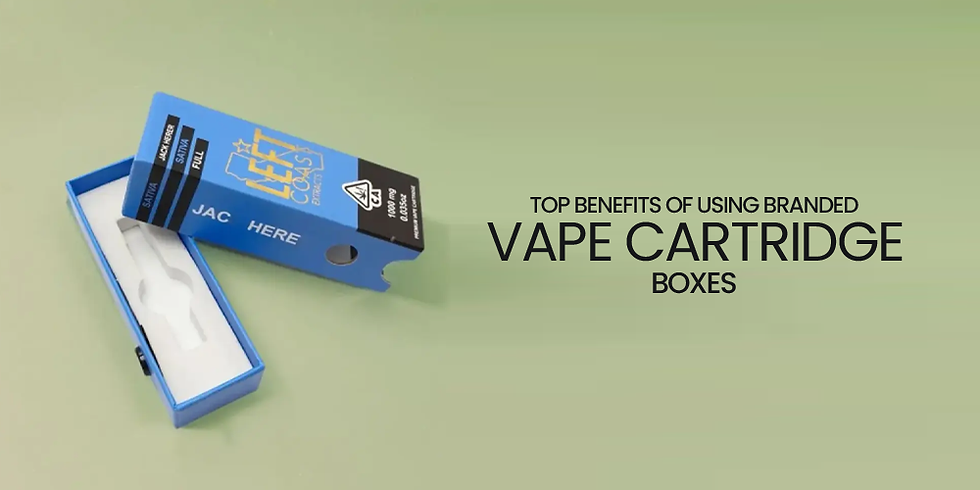The Future of Cardboard Cereal Boxes: Innovations and Trends in the Packaging Industry
- teresabutler980
- Jul 31, 2024
- 3 min read
The humble cardboard cereal box has been a staple of breakfast tables for decades. However, as the packaging industry evolves, so too must the cereal box. The future of cardboard cereal boxes is set to be shaped by a range of innovations and trends, driven by consumer demands, environmental considerations, and advancements in technology. This article explores the exciting changes we can expect in the world of cereal packaging.
Sustainability and Eco-Friendly Materials
One of the most significant trends in packaging is the shift towards sustainability. Consumers are increasingly aware of their environmental footprint and are demanding eco-friendly options. Cardboard cereal boxes, traditionally made from paperboard, are already a more sustainable choice compared to plastic alternatives. However, the future will see even more emphasis on using recycled materials and adopting biodegradable and compostable coatings.
Innovations in Sustainable Materials:
Plant-Based Coatings: Traditional plastic coatings used for moisture resistance can be replaced with plant-based alternatives, making the entire box compostable.
Recycled Paper: Advances in recycling technology will enable the use of higher percentages of post-consumer recycled paper without compromising the box's strength and print quality.
Smart Packaging
The integration of technology into packaging is another exciting development. Smart packaging can enhance the consumer experience and provide valuable data for manufacturers.
Examples of Smart Packaging:
QR Codes and Augmented Reality (AR): Scanning a QR code on a cereal box could unlock games, educational content, or promotional offers. AR experiences can turn the cereal box into an interactive tool that engages children and adults alike.
NFC (Near Field Communication) Tags: These can be embedded in the packaging to provide product information, track supply chain data, and even offer loyalty rewards.
Personalization and Customization
Consumers are looking for more personalized experiences, and packaging is no exception. Customization options are becoming increasingly popular, allowing brands to create unique and engaging designs that resonate with individual consumers.
Trends in Personalization:
Limited Edition Designs: Seasonal or event-based designs can create a sense of urgency and exclusivity.
Custom Printing: Advances in digital printing technology make it feasible to produce short runs of custom designs, allowing for more targeted marketing efforts.
Functional Improvements
The future of cereal boxes also includes functional enhancements that improve usability and convenience for consumers.
Functional Innovations:
Easy-Open and Resealable Features: Consumers appreciate packaging that is easy to open and can be resealed to keep the product fresh.
Improved Pouring Spouts: Designs that facilitate better pouring can reduce spillage and enhance the user experience.
Minimalist and Clean Designs
Design trends are moving towards minimalist and clean aesthetics. Consumers are drawn to packaging that is simple yet elegant, with clear and concise information.
Aesthetic Trends:
Minimalist Graphics: Clean lines, simple color schemes, and minimal text can create a sophisticated look.
Transparent Windows: Small windows that showcase the product inside can build trust and appeal to health-conscious consumers.
Enhanced Branding Opportunities
Packaging is a critical component of a brand's identity. The future will see brands leveraging packaging to tell their story and connect with consumers on a deeper level.
Branding Strategies:
Storytelling Through Packaging: Using the box to share the brand's history, values, and mission can create a stronger emotional connection with consumers.
Consistency Across Products: A cohesive design language across all products reinforces brand recognition and loyalty.
Regulatory and Compliance Considerations
As governments implement stricter regulations on packaging materials and waste, the industry must adapt. Compliance with these regulations will drive innovation in sustainable practices and materials.
Regulatory Trends:
Recycling Mandates: Increasing requirements for recyclable content in packaging will push manufacturers to develop new materials and processes.
Plastic Reduction Policies: Legislation aimed at reducing plastic waste will accelerate the shift towards alternative materials for coatings and liners.
Conclusion
The future of cardboard cereal boxes is bright, with a plethora of innovations and trends set to transform this everyday item. From sustainable materials and smart packaging to personalization and enhanced functionality, the cereal box is evolving to meet the demands of modern consumers and environmental challenges. As brands embrace these changes, they have the opportunity to create packaging that not only protects and preserves their products but also engages and delights their customers. The cereal box of tomorrow will be more than just a container; it will be a powerful tool for communication, sustainability, and brand building.
Recent Posts
See AllIntroduction That dusty, dented vehicle in your driveway might look useless, but it’s actually a source of instant income. Junk car for...











Comments